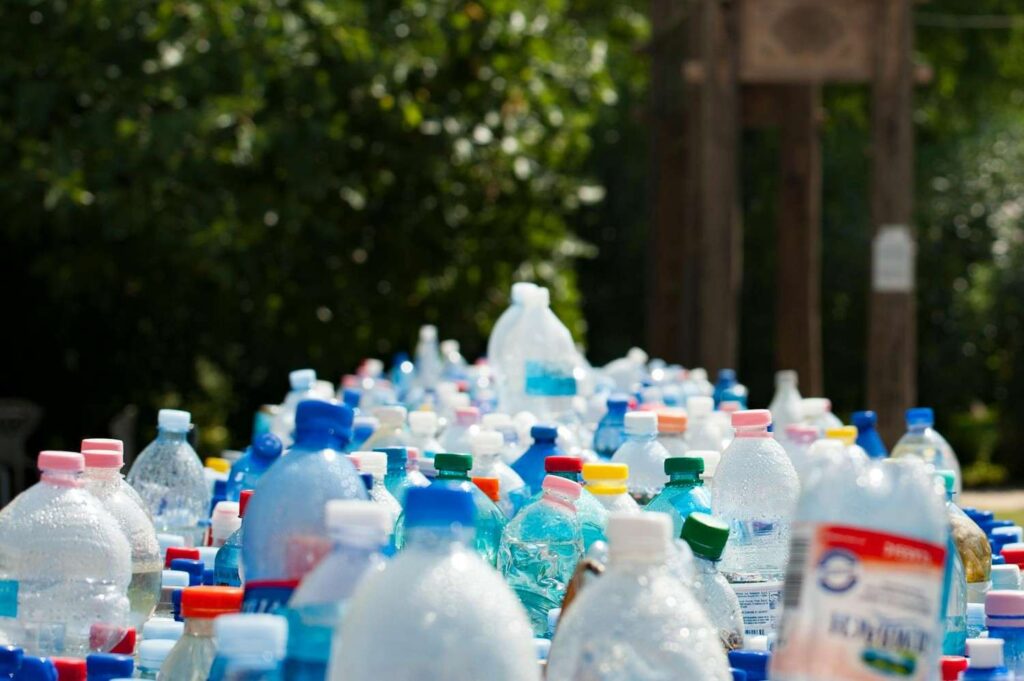Bisphenol A (BPA): Unveiling the Hidden Dangers in Plastics
BPA (Bisphenol A) is a synthetic chemical that was first made in the 1930s. It has become an essential ingredient in making plastics and resins. The key properties of BPA allow it to be widely used in various industries, making it a part of many everyday products.
BPA is mainly used to create polycarbonate plastic and epoxy resin. When BPA is used in polycarbonate plastic, it becomes stronger and more durable, making it a good alternative to glass. This strength and clarity make it suitable for many products.
Uses of BPA
BPA is found in various applications:
- Food and Beverage Packaging: BPA-based plastics are used in food and drink packaging. They help keep food fresh and protect it from air and moisture, which can spoil it.
- Electronic Products: BPA is used in electronic devices like laptops, mobile phones, and televisions. BPA-based plastics are resistant to heat and pressure, increasing the durability of these devices.
- Construction Industry: BPA is used in epoxy resin for construction, creating strong connections between different building materials. This helps ensure the stability and safety of buildings.
- Car Parts: BPA-based plastics are used to make parts for cars, such as dashboards and door panels. These plastics are lightweight and strong, improving the overall performance of the vehicle.
- Healthcare Products: BPA is used in some healthcare products, like injection containers and medical devices. Its antibacterial properties help keep these products safe and hygienic.
Harmful Effects and Health Risks
BPA (Bisphenol A) is a chemical widely used in plastic production. It is mainly found in polycarbonate plastics and epoxy resins. Concerns about the potential harmful effects of BPA on health and the environment are growing, making it important for everyone to be informed.
1. Hormonal Disruption
- Reproductive Problems: High levels of BPA exposure can lead to irregular periods in women and decreased sperm counts in men.
- Birth Defects: Exposure to BPA during pregnancy can negatively affect fetal development, potentially causing birth defects.
2. Risks During Pregnancy
- BPA exposure can have serious effects on the health of pregnant women and their babies. It can affect brain and organ development in the fetus, leading to:
- Behavioral Issues in Children: Studies show that children exposed to BPA may have a higher risk of ADHD (Attention Deficit Hyperactivity Disorder).
- Other Health Complications: Children can also face various health issues, including weakened immune systems and metabolic problems.
3. Kidney and Liver Issues
- Liver Disease Risk: BPA exposure is linked to fatty liver disease and liver tumors.
- Kidney Function Problems: BPA can be toxic to kidney cells, potentially leading to kidney failure.
4. Cancer Risk
- Some studies suggest that BPA may increase the risk of breast and prostate cancer. BPA can change cell growth, encouraging cancer development:
- Breast Cancer: BPA can stimulate cancer cell growth in breast tissue.
- Prostate Cancer: The risk of prostate cancer may increase with BPA exposure, especially in older men.
5. Stomach Issues
- BPA can cause various stomach problems, including:
- Discomfort and Bloating: Exposure to BPA can lead to stomach discomfort and bloating.
- Digestive Problems: BPA may interfere with digestive functions, increasing the risk of diarrhea, constipation, and other digestive issues.
6. Harm to Children’s Health
- BPA can negatively affect children’s physical and mental development. Children may experience:
- Developmental Issues: BPA exposure can hinder mental development, leading to learning difficulties.
- Behavioral Problems: Children exposed to BPA may experience higher levels of stress and anxiety, affecting their social interactions.
Ways to Reduce BPA Exposure
To protect yourself from the harmful effects of BPA, consider taking the following steps:
- Choose BPA-Free Products: Many BPA-free options are available on the market. Use glass or stainless steel containers for food and drinks.
- Be Aware of Packaging: Select BPA-free canned foods and read labels when buying canned products.
- Avoid Fast Food: Try to steer clear of fast food and processed foods, as they are more likely to contain BPA.
The harmful effects of BPA plastic can negatively impact our health and the environment. By choosing BPA-free options and being aware of products containing BPA, we can ensure a safer future for ourselves and our families. Awareness and information are key to protecting ourselves from these dangers. Understanding the harmful effects of BPA is crucial, as it can have long-term impacts on our lives and health.
Ways to Identify BPA Plastic
Identifying BPA (Bisphenol A) plastic is essential for avoiding potential health risks associated with its use. Here are detailed ways to recognize BPA-containing products:
1. Labels and Markings
- BPA Free: Many brands produce BPA-free products, and these are often labeled with “BPA Free” on the packaging. Always look for this label when purchasing plastic items.
- Contains BPA: If a product contains BPA, this information may be explicitly stated on the product’s label. Make sure to check for this information.
2. Plastic Identification Number
- Plastic Markings: Each plastic container usually has a number at the bottom (ranging from 1 to 7).
- Number 3 (PVC): This type of plastic can contain BPA.
- Number 7 (Other): This number can also indicate the presence of BPA, as it is used for various types of plastic.
- Numbers 1, 2, 4, 5: Generally considered BPA-free and healthier options.
3. Polycarbonate Plastic
- Transparency: BPA-containing polycarbonate plastics are typically very clear and strong.
- Durability: If a product feels exceptionally strong and durable, it may be polycarbonate, which often contains BPA.
4. Coatings and Paints
- Glossy Surface: BPA-containing containers often have a glossy or smooth surface. If you see a shiny or brightly colored container, it may likely contain BPA.
- Coatings and Liners: Especially in food or drink containers, if there are any liners or coatings, they may contain BPA.
5. Food and Beverage Packaging
- Cans and Containers: Many food cans have BPA-containing epoxy resin on their inner lining, which can leach into the food. If the inside of a can is smooth or shiny, it may contain BPA.
- Plastic Bottles: Reusable plastic bottles often contain BPA. Check the number on the bottom of the bottle.
6. Product Information
- Brand-Specific Products: Some brands provide specific information about their BPA-free products. Choosing products from reputable brands can increase the likelihood of them being BPA-free.
- Company Websites: Many companies publish safety information and ingredient details about their products on their websites. Checking this information can help you make informed choices.
7. Research and Evidence
- Research Reports: Reading research reports on BPA can help you understand its effects and characteristics better.
- Health Authority Guidelines: Gather information from health authorities such as the FDA or EPA regarding BPA.

Conclusion
Identifying BPA-containing plastics is crucial for health protection. By following the guidelines mentioned above, you can effectively recognize BPA-free products, ensuring a safer environment for yourself and your family. Increasing awareness about BPA can help us protect ourselves from its potential harmful effects.





















